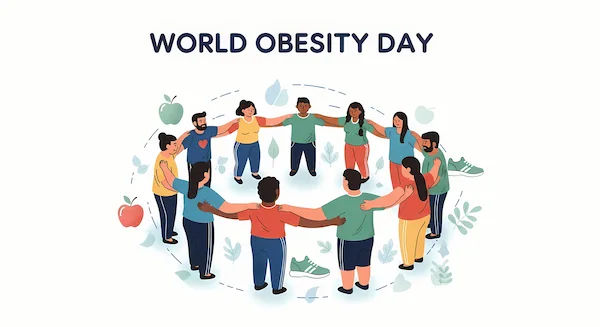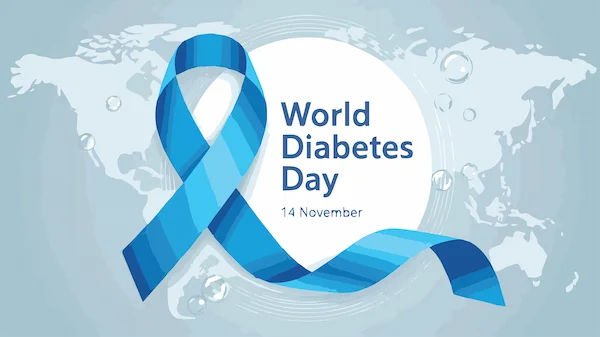Your Practical Guide to Reducing Obesity and Reclaiming Your Health
Learn effective, science-backed strategies to reduce obesity through balanced nutrition, physical activity, and mindful lifestyle changes for lasting health and well-being.

.webp?tr=q-80,f-webp,w-350,dpr-2,c-at_max 700w)
Introduction
Obesity is a complex and common health challenge affecting millions worldwide. It's often misunderstood as a simple lack of willpower, but in reality, it's a chronic disease influenced by genetics, environment, psychology, and lifestyle. This guide moves beyond the scale to offer a compassionate and practical roadmap for reducing obesity. If you're feeling overwhelmed by conflicting advice, you're not alone. This article will break down the science into actionable steps, focusing on sustainable changes rather than quick fixes. We will explore the fundamental causes of weight gain, the significant health risks associated with obesity, and a multi-faceted action plan encompassing diet, exercise, and crucial behavioral shifts. Our goal is to empower you with knowledge and strategies to embark on a healthier, more vibrant life. Remember, the journey to reduce obesity is a marathon, not a sprint, and every positive step counts.
Understanding Obesity: More Than Just a Number on the Scale
What is Obesity? Defining BMI and Body Fat Percentage
Obesity is medically defined as having an excessive amount of body fat that poses a health risk. The most common screening tool is the body mass index (BMI), which is a person’s weight in kilograms divided by the square of their height in meters. A BMI of 30.0 or higher falls within the obesity range. While BMI is a useful population-level indicator, it doesn't distinguish between weight from fat and muscle. Therefore, measures like waist circumference and body fat percentage provide a more complete picture of health risks. For most adults, a waist circumference greater than 40 inches (102 cm) for men and 35 inches (88 cm) for women indicates abdominal obesity, which is particularly linked to metabolic issues.
The Root Causes: Why Obesity Occurs
Understanding the "why" is the first step toward crafting an effective "how." The causes are multifaceted.
Lifestyle and Dietary Factors
The modern environment often promotes weight gain. The widespread availability of high-calorie, processed foods, large portion sizes, and sedentary jobs creates a perfect storm. Consuming more calories than the body burns for energy—a state called a positive energy balance—is a primary driver. Diets high in sugary drinks, refined carbohydrates, and unhealthy fats contribute significantly to this imbalance.
Genetic and Hormonal Influences
Science shows that genetics can predispose individuals to obesity. Genes can affect how your body stores fat and how it regulates appetite. Hormones also play a critical role. For instance, leptin resistance (where the brain doesn't respond to the "fullness" hormone leptin) and insulin resistance can disrupt the body's natural weight-regulation systems, making weight management exceptionally challenging for some.
Consult a Bariatrician for the best advice
The Health Imperative: Why Addressing Obesity is Crucial
Carrying excess weight is not just about appearance; it's a major risk factor for numerous serious health conditions. Addressing obesity is one of the most impactful steps you can take for your long-term well-being.
Short-term and Long-term Health Risks
In the short term, obesity can lead to breathlessness, increased sweating, joint pain, and low energy levels. Long-term, it significantly increases the risk of:
- Type 2 Diabetes: Excess fat, especially abdominal fat, promotes insulin resistance.
- Heart Disease and Stroke: Obesity raises blood pressure, cholesterol levels, and triglycerides.
- Certain Cancers: Including breast, colon, endometrial, and kidney cancer.
- Sleep Apnoea: Fatty deposits in the neck can obstruct breathing during sleep.
- Osteoarthritis: The extra weight puts added stress on weight-bearing joints.
The good news is that even a modest weight loss of 5-10% of your total body weight can lead to dramatic improvements in these risks.
Your Action Plan: Sustainable Strategies for Weight Management
A successful plan to reduce obesity rests on three pillars: diet, activity, and behavior. Crash diets are ineffective and unsustainable. The key is to build healthy habits that you can maintain for life.
Revolutionising Your Diet: What to Eat for Sustainable Weight Loss
Focus on the quality of your calories, not just the quantity. Building a nutritious diet is foundational.
Foods to Embrace: Building a Nutrient-Dense Plate
Here’s how to build a balanced, nutrient-rich plate to support sustainable weight loss:
- Non-Starchy Vegetables: Fill half your plate with leafy greens, broccoli, peppers, and carrots. They are high in fibre and volume but low in calories.
- Lean Proteins: Include sources like chicken breast, fish, tofu, lentils, and Greek yoghurt. Protein promotes satiety and helps preserve muscle mass during weight loss.
- Whole Fruits: Enjoy berries, apples, and oranges for fibre and natural sweetness.
- Healthy Fats: Avocado, nuts, seeds, and olive oil in moderation are essential for hormone function and absorption of fat-soluble vitamins.
Foods to Limit: Identifying and Reducing Culprits
Limiting certain foods can help manage weight effectively:
- Sugary Beverages: Sodas, juices, and sweetened coffees are major sources of empty calories.
- Refined Carbohydrates: White bread, white rice, and pastries spike blood sugar and offer little nutritional value.
- Ultra-Processed Foods: Chips, cookies, and frozen meals are engineered to be overeaten and are linked to weight gain.
Incorporating Physical Activity: Finding Movement You Enjoy
Exercise is crucial for burning calories, improving mood, and boosting metabolism.
The Role of Cardio and Strength Training
- Cardiovascular Exercise (like brisk walking, cycling, swimming) burns calories and improves heart health. Aim for at least 150 minutes of moderate-intensity cardio per week.
- Strength Training (using weights, resistance bands, or bodyweight) is non-negotiable. Muscle is metabolically active tissue, meaning it burns more calories at rest than fat does. Building muscle helps you maintain a healthy weight long-term.
The Power of NEAT (Non-Exercise Activity Thermogenesis)
NEAT is the energy you burn for everything you do that isn't sleeping or formal exercise. This includes walking to your car, gardening, and even fidgeting. Increasing your NEAT by taking the stairs, walking during phone calls, or parking farther away can significantly contribute to your daily calorie expenditure without a trip to the gym.
The Mind-Body Connection: Behavioral Changes for Success
This is the often-overlooked key to sustainable weight loss.
Mindful Eating Techniques
Pay attention to your body's hunger and fullness cues. Eat slowly, without distractions like TV or phones. This prevents overeating and helps you enjoy your food more. Keeping a food journal can also increase awareness of emotional eating triggers.
Sleep, Stress, and Hydration
Taking care of sleep, managing stress, and staying hydrated are essential for overall health and weight management:
- Sleep: Poor sleep disrupts appetite-regulating hormones (ghrelin and leptin), making you hungrier.
- Stress: Chronic stress raises cortisol levels, which can increase abdominal fat storage and cravings for unhealthy foods.
- Hydration: Sometimes, thirst is mistaken for hunger. Drinking water before meals can also promote feelings of fullness.
Conclusion
Reducing obesity is a profound journey of self-care that extends far beyond the numbers on a scale. It's about building a healthier relationship with food, finding joy in movement, and nurturing your mental well-being. By understanding the root causes and implementing the sustainable strategies outlined in this guide—focusing on a balanced, nutritious diet, consistent physical activity, and supportive behavioral changes—you can significantly improve your health and vitality. Remember, progress, not perfection, is the goal. There will be setbacks, but what matters is your commitment to getting back on track. Be patient and kind to yourself. If you feel stuck or have underlying health concerns, don't hesitate to seek professional guidance. If your condition does not improve after trying these methods, book a physical visit to a doctor with Apollo24|7 for a comprehensive evaluation and tailored support. Your health is your greatest asset; investing in it is always worth it.
Consult a Bariatrician for the best advice
Consult a Bariatrician for the best advice

Dr. Sunil Kaul
General Surgeon
30 Years • MBBS, MS, FICS, FIMSA, FMAS
Delhi
Apollo Hospitals Indraprastha, Delhi
(25+ Patients)

Dr. Kiran K J
General and Laparoscopic Surgeon
18 Years • MBBS, MS, FMAS, DMAS (Fellow & Dip in Min. Access surg.), FALS- Bariatric & Robotic Surgery
Bengaluru
Apollo Hospitals Bannerghatta Road, Bengaluru
(50+ Patients)

Dr. Rajnesh Chander Reddy
General and Laparoscopic Surgeon
30 Years • MBBS, MS, FICS (Bariatric surgeon), Fellow (Laparoscopic Surgeon)
Hyderabad
Apollo Hospitals Jubilee Hills, Hyderabad
(100+ Patients)

Atul Sardana
General and Laparoscopic Surgeon
25 Years • MBBS, MS - General Surgery
New Delhi
Apollo Spectra Hospitals, New Delhi

Dr. Raj Palaniappan
Bariatrician
22 Years • MBBS, MS, MMAS, FICS (Gastro), FMAS, DMAS, FALS, FRS, FLS
Chennai
Apollo Hospitals Greams Road, Chennai
(225+ Patients)
Consult a Bariatrician for the best advice

Dr. Sunil Kaul
General Surgeon
30 Years • MBBS, MS, FICS, FIMSA, FMAS
Delhi
Apollo Hospitals Indraprastha, Delhi
(25+ Patients)

Dr. Kiran K J
General and Laparoscopic Surgeon
18 Years • MBBS, MS, FMAS, DMAS (Fellow & Dip in Min. Access surg.), FALS- Bariatric & Robotic Surgery
Bengaluru
Apollo Hospitals Bannerghatta Road, Bengaluru
(50+ Patients)

Dr. Rajnesh Chander Reddy
General and Laparoscopic Surgeon
30 Years • MBBS, MS, FICS (Bariatric surgeon), Fellow (Laparoscopic Surgeon)
Hyderabad
Apollo Hospitals Jubilee Hills, Hyderabad
(100+ Patients)

Atul Sardana
General and Laparoscopic Surgeon
25 Years • MBBS, MS - General Surgery
New Delhi
Apollo Spectra Hospitals, New Delhi

Dr. Raj Palaniappan
Bariatrician
22 Years • MBBS, MS, MMAS, FICS (Gastro), FMAS, DMAS, FALS, FRS, FLS
Chennai
Apollo Hospitals Greams Road, Chennai
(225+ Patients)
More articles from Obesity
Frequently Asked Questions
What is the difference between being overweight and having obesity?
Both terms indicate a weight higher than what is considered healthy for a given height, but they are defined by BMI ranges. Overweight is a BMI of 25.0 to 29.9, while obesity is a BMI of 30.0 and above. Obesity is further classified into classes (I, II, III), indicating increasing levels of health risk.
Can you be healthy and have obesity?
This is a concept known as 'metabolically healthy obesity.' Some individuals with obesity may not have immediate metabolic issues like high blood pressure or cholesterol. However, research shows they are still at a higher long-term risk for cardiovascular disease and other conditions compared to those with a healthy weight. The excess fat tissue itself can cause inflammation over time.
What are the first steps for someone who is severely obese to start losing weight?
The safest and most effective first step is to consult a healthcare professional. They can assess your overall health, rule out underlying causes, and help you create a gradual, manageable plan. This might start with small dietary swaps and gentle increases in daily activity (like walking) before introducing more intense exercise.
How can I deal with emotional eating?
Start by identifying your triggers (stress, boredom, sadness). Keep a journal to note what you feel when you have cravings. Then, develop non-food coping strategies, such as going for a walk, calling a friend, practicing deep breathing, or drinking a glass of water. Managing obesity often requires addressing the psychological patterns behind eating habits.
Are weight-loss medications or surgery a good option?
For individuals with severe obesity or those who haven't succeeded with lifestyle changes alone, medical interventions can be effective tools. Prescription medications and bariatric surgery work by altering appetite, absorption, or metabolism. These are serious decisions that should be made in close consultation with a medical specialist at Apollo24|7 or a similar institution to understand the benefits, risks, and necessary lifelong follow-up.
.webp)



